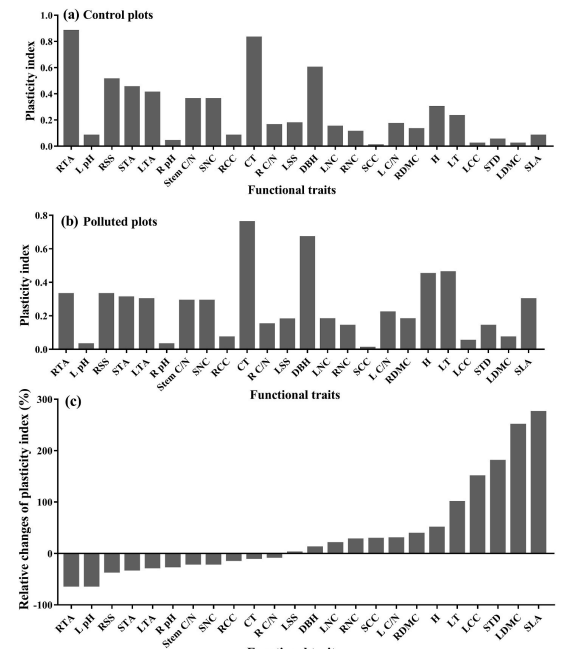Gao C.H., Zhang S., Wei M.Y., Ding Q.S., Ma D.N., Li J., Wen C., Li H., Zhao Z.Z., Wang C.H. and Zheng H.L. 2022. Effects of shrimp pond effluent on functional traits and functional diversity of mangroves in Zhangjiang Estuary. Environmental Pollution 297:118762.
In recent years, the scale of shrimp ponds has rapidly increased adjacent to mangrove forests. Discharge of shrimp pond effluent has led to degradation of the surrounding environment and reduction of biodiversity in the estuary. But it remains poorly understood how shrimp pond effluent affects functional traits and functional diversity of mangroves. We sampled roots, stems and leaves of Kandelia obovata and other mangrove plants, as well as sediments and pore water from shrimp pond effluent polluted area (P) and clean area (control area, C) in Zhangjiang Estuary in southeast coast of China. Twenty plant functional traits and six functional diversity indices were analyzed to explore the effects of shrimp pond effluent on individual plants and mangrove communities. The results showed that the discharge of shrimp pond effluent significantly affected the nutrient content in soils and pore water, for example, sediment NH4 + and NO3 − concentration increased from 0.26 ± 0.06 to 0.77 ± 0.29 mg/g and from 0.05 ± 0.03 to 0.16 ± 0.05 mg/g, respectively, when comparing the C and P site. Furthermore, some mangrove plant functional traits such as plant height, diameter at breast height, canopy thickness and specific leaf area were significantly increased by the effluent discharge. Functional diversity in the polluted area reduced as a whole compared to the control area. In particular, ammonium and nitrate nitrogen input is the main reason to induce the changes of plant functional traits and functional diversity. Besides, the community structure changed from functional differentiation to functional convergence after shrimp pond effluent discharge. In addition, the long-term shrimp pond effluent discharge may lead to the ecological strategy shift of K. obovata, while different organs may adopt different ways of nutrient uptake and growth strategies in the face of effluent disturbance. In conclusion, pollution from shrimp pond does affect the functional traits of mangrove plants and functional diversity of mangrove community. These results provide strong evidence to assess the impact of effluent discharges on mangrove plants and provide theoretical basis for conservation and sustainable development of mangroves.

Plasticity index and relative changes of plasticity index based on functional traits of mangrove plants. (a) Plasticity index of functional traits in control plots, (b) Plasticity index of functional traits in polluted plots, (c) Relative changes of plasticity index in the polluted area compared to the control area.

